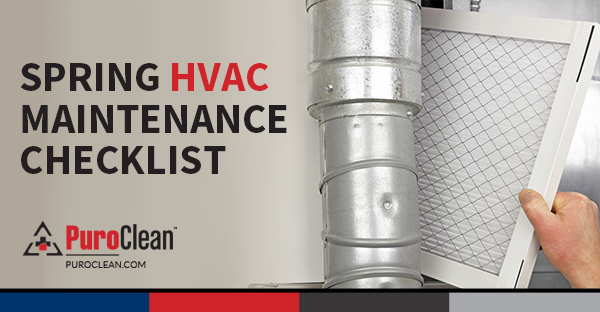Mold growth is a common concern following a water leak, whether it occurs in a commercial building or a residential space. Mold not only poses a threat to the structural integrity of a building but also to the health of its occupants. Understanding how quickly mold can develop and how to manage it is crucial for minimizing damage and maintaining a healthy environment.
In this article, we will explore the mold life cycle, the mold growth timeline, and the importance of commercial water damage restoration. By the end, you’ll have a thorough understanding of why swift action is necessary to combat mold growth.
The Conditions Mold Needs to Grow
For mold to grow, certain conditions must be met. These include:
- Moisture: Mold requires a water source to grow. This could be from a water leak, high humidity, or condensation. Even a small amount of moisture can provide the necessary conditions for mold spores to germinate and grow. Bathrooms, basements, and kitchens are common areas where mold growth is observed due to their propensity for moisture accumulation.
- Food Source: Mold feeds on organic materials like wood, drywall, and fabrics. Buildings provide ample food sources for mold, from cellulose in wallpaper glue to dust and dirt that accumulate over time. The presence of these materials makes it challenging to eliminate mold once it starts to grow.
- Temperature: Mold generally grows in temperatures between 60-80°F, which is typical for indoor environments. However, some mold species can grow in temperatures outside this range, making it crucial to address moisture issues promptly to prevent any potential growth.
- Time: Mold needs time to grow, and under the right conditions, it can begin to develop quickly. The longer the mold is left unchecked, the more difficult it becomes to remove, and the more damage it can cause to the property and health of its occupants.
The Mold Growth Timeline
The timeline for mold growth after a water leak can vary depending on several factors, such as the amount of moisture and the temperature. Understanding this timeline is crucial for taking preventive measures before mold becomes a significant issue.
24 to 48 Hours
Within 24 to 48 hours after a water leak, mold spores can begin to germinate if the conditions are right. At this stage, mold growth is not usually visible, but it is crucial to address any water damage immediately to prevent mold from taking hold. Quick action can prevent the spores from developing into larger colonies, saving time and resources in the long run.
This early stage is the most critical period for intervention. By removing water and drying affected areas promptly, you can significantly reduce the likelihood of mold establishing itself. Ignoring this timeframe can lead to more extensive remediation efforts later on.
3 to 12 Days
During this period, mold colonies can start to grow and become visible on surfaces. You might notice small spots of mold appearing on walls, ceilings, or other damp areas. If left unchecked, these colonies will continue to expand and become more difficult to manage. The visibility of mold at this stage indicates that it has taken root, requiring more intensive efforts to eliminate.
The growth during this timeframe can lead to noticeable changes in air quality, potentially causing allergic reactions or respiratory issues among sensitive individuals. Addressing mold growth within this window is crucial to maintaining a healthy indoor environment and preventing further structural damage to the building.
2 to 3 Weeks
By this time, mold growth can become significant and may spread to other areas of the building. The air quality can be compromised, and you might notice a musty odor. Prolonged mold exposure can lead to health issues, especially for individuals with allergies or respiratory conditions. The structural integrity of the building may also be at risk, as mold can weaken materials over time.
At this stage, professional intervention is often necessary to effectively remove mold and restore the affected areas. The longer the mold is allowed to grow, the more extensive the damage becomes, making remediation efforts more costly and time-consuming.
The Importance of Commercial Water Damage Restoration

Commercial water damage restoration is a critical process for preventing mold growth and restoring a building to its original condition. Here’s why it’s essential:
Immediate Response
A quick response to water damage can prevent mold from growing. Professional restoration companies have the tools and expertise to remove water quickly and thoroughly, reducing the chance of mold development. Their swift action can mitigate the extent of damage, saving property owners from more severe issues down the line.
Thorough Drying
Effective drying is crucial for preventing mold. Restoration experts use industrial-strength dehumidifiers and air movers to dry out the affected areas. They also monitor moisture levels to ensure all water has been removed. This level of thoroughness is often unattainable with standard household equipment, emphasizing the need for professional services in severe cases.
By employing advanced drying techniques, restoration professionals can prevent mold spores from germinating, even in hard-to-reach areas. Their expertise ensures the environment is returned to a safe and dry state, reducing the risk of mold growth.
Cleaning and Sanitizing
Restoration involves cleaning and sanitizing affected areas to remove any mold spores and prevent future growth. This may include removing damaged materials, such as drywall and carpeting, that cannot be salvaged. Proper cleaning and sanitizing are crucial for restoring a healthy indoor environment and preventing mold from reestablishing itself.
The sanitization process also involves applying antimicrobial treatments to affected areas, which can inhibit mold growth and protect against future infestations. By thoroughly cleaning and sanitizing, restoration professionals ensure that the property is safe for occupants and free from mold-related hazards.
Preventive Measures
After addressing the immediate damage, restoration professionals can help identify and fix the source of the water leak to prevent future issues. They may also recommend improvements, such as better ventilation, to reduce humidity levels and discourage mold growth. Implementing these preventive measures can significantly reduce the risk of future mold problems.
Taking preventive actions can also extend the lifespan of building materials and improve overall indoor air quality. By addressing the root cause of water damage and making necessary improvements, property owners can enjoy a healthier and more resilient environment.
DIY Mold Prevention Tips
While professional restoration is the best way to handle significant water damage, there are steps you can take to prevent mold growth:
- Act Quickly: Address water leaks immediately to minimize moisture levels. The faster you respond to a leak, the less chance mold has to grow.
- Ventilate: Ensure proper ventilation in areas prone to moisture, like bathrooms and kitchens. Good airflow can help dry out surfaces quickly and prevent mold from establishing itself.
- Use Dehumidifiers: In humid climates, using dehumidifiers can help control moisture levels. Keeping indoor humidity below 60% can make a significant difference in preventing mold growth.
- Regular Inspections: Regularly inspect your property for signs of leaks or water damage, especially after heavy rain. Early detection of water issues can prevent mold from becoming a problem.
Conclusion
Mold can start growing fast after a water leak, which is why immediate action is so important. Understanding how quickly mold can develop and the value of expert water damage restoration helps protect your property and your health. When moisture becomes a concern, calling in professionals is the smartest move.
If your home or business in Fort Mill has experienced water damage, contact the experts at PuroClean of Fort Mill. Our team is ready to help you remove moisture, prevent mold, and restore your space with confidence.




 PuroClean of Fort Mill
PuroClean of Fort Mill